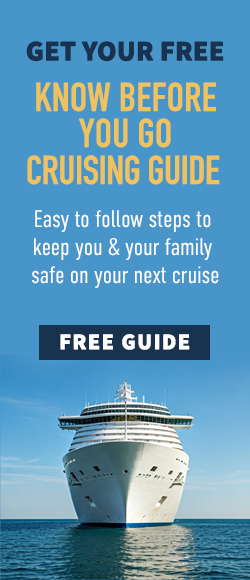By Kayla Castille
CNHI News Service
There weren’t enough life boats for everyone on board. The crew wasn’t prepared for a full-scale evacuation. And a nearby ship that might have sailed to the rescue misread distress flares.
That was the case 100 years ago, on April 15, 1912, when the Titanic struck an iceberg and sank in the North Atlantic on its maiden voyage, killing 1,517 people aboard.
It was one of the deadliest maritime accidents ever, and led to significant improvements in safety rules aimed at preventing similar calamities. Today’s cruise ships are far better equipped to cope with emergencies. Disasters at sea are rare.
Still, the question lingers: Could it happen again?
“The answer is yes, because it just did,” said Daniel Allen Butler, a historian and author of “Unsinkable: The Full Story of RMS Titanic.” He referred to the Costa Concordia accident in January.
“If the Costa Concordia had been, say, off the coast of Alaska rather than off the coast of Italy, it would have been a disaster of enormous proportions,” said Butler.
The location difference is huge. The Titanic sank 370 miles off the coast of Newfoundland in an open ocean that was 12,000-feet deep. Most of the people died from hypothermia in the 28-degree water after the ship went down.
The Costa Concordia struck a rock outcropping just off a Tuscan island that tore a 165-foot hole in its port hull, causing it to go aground in shallow water and eventually tip to her starboard side. Yet 30 people died during a confusing, six-hour long evacuation process.
Unlike the Titanic, there were sufficient lifeboats. That was one of the rule changes that evolved from the Titanic’s sinking – a lifeboat seat for everyone on an ocean liner. The Titanic had only 20 lifeboats, with between 65 and 40 seats each, or enough for just a third of the ship’s capacity and half the number of people on its doomed voyage.
Though this seems foolish by modern standards, historians note the Titanic was in compliance with maritime regulations at the time. Three years earlier, in 1909, another ship owned by White Star Line sank off the coast of Massachusetts. It took 36 hours for the ship to go down, and in that time, the ship’s lifeboats were used in a relay system, shuttling passengers to shore and returning for more.
“People began to see lifeboats as a convenience,” Butler said. “No one imagined a situation where everyone would have to evacuate simultaneously” in an open ocean.
The International Convention for the Safety of Life at Sea (SOLAS), passed in 1914, set the new lifeboat rule. It also standardized red rockets as the universal signal of a ship in distress. That came in response to the discovery that the SS Californian, which historians say was just 10 miles from the Titanic, misinterpreted the distress flares sent up by the sinking ship’s crew.
Two other major changes included the United States government’s Radio Act of 1912 — which mandated 24-hour monitoring of ships’ radios so as to not miss distress calls — and the creation of the International Ice Patrol, which warns ships of icebergs in the North Atlantic.
“It (SOLAS) has been a good law, to a certain extent,” said Charles Lipcon, a Miami, Fla., maritime lawyer and author of “Unsafe on the High Seas.” Still, he added, disasters remain a risk.
“Cruises are great vacations,” said Lipcon. “But the main problem from my point of view is that people leave their common sense at the dock. They get on these ships and they think they’re totally safe.”
Last year, 16 million passengers worldwide rode cruise ships, according to the Cruise Lines International Association. And the ships they boarded were, for the most part, far bigger than the Titanic.
John Deiner, managing editor of CruiseCritic.com, said passengers are more safety-conscious since the Costa Concordia accident. “People are looking at the news, seeing that these things do happen, and they’re taking (safety) a lot more seriously,” he said.
The Costa Concordia accident occurred before the passengers and crew held a mandatory muster drill, during which passengers don their life jackets and meet in a designated area to review safety information. Maritime regulations required the drill within 24 hours of setting sail. The Costa Concordia ran aground before then.
Deiner said new regulations now require that all cruise ships conduct muster drills before the ship leaves port.
“(Before) a lot of people were very lackadaisical about the muster … they don’t want to go, they have a drink in their hand,” he said. Recently, he added, a couple on a Holland America cruise was kicked off the ship for skipping the drill, a sign cruise lines are taking safety more seriously.
“It’s important to go, and more importantly, you want to pay attention,” he said.
Deiner urges travelers to learn where life jackets are kept, try them on so they know how they fit, and review the ship map on the back of the cabin door so they know how to escape in an emergency.
It seems most veteran cruisers weren’t spooked by the Costa Concordia disaster. A poll conducted by Cruise Critic shortly after the accident found almost 67 percent of the site’s users were not concerned, and another 29 percent said they were worried but would still cruise.
“What’s reassuring to me and to everyone here is that it (major accident) is so rare,” Deiner said. “Costa Concordia really caught everyone off-guard.”
Butler, the maritime historian, worries that despite changes in safety rules and technology, another Titanic-like disaster is possible.
“I don’t want to be a doomsayer… I have nothing against the cruise industry,” he said. “But there is a major disaster waiting to happen.”





